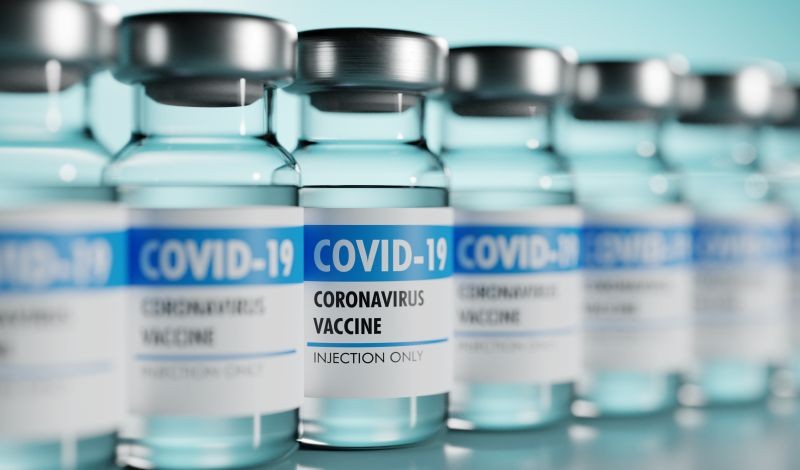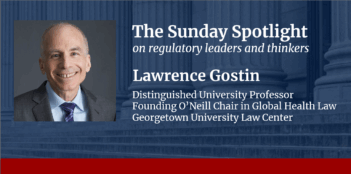
Scholars argue that vaccine patents are a core cause of global health disparities.
In 2021, 70 percent of COVID-19 vaccines produced went to high-income countries while less than four percent made it to low-income countries. By 2022, less than nine percent of people in low-income countries received at least one dose of a vaccine while 60 percent of people in high-income countries received a dose. One study estimated that the inequitable distribution of vaccines cost one million lives.
What caused such deep disparities between rich and poor countries in who received vaccines—and, accordingly, in who lived and died?
In a recent article, Madhavi Sunder of Georgetown University Law Center and Hoachen Sun of University of Hong Kong Faculty of Law point to intellectual property (IP).
Patents are the principal form of IP protection for vaccines and medicines. They grant pharmaceutical companies the right to exclude others from making and selling their product.
As a result, drugmakers can restrict the quantity of vaccines available and price them higher than they would if they had competitors. The consequence, Sunder and Sun contend, is that patents create incentives for pharmaceutical companies to “serve those who can afford to pay.”
Sunder and Sun describe three ways in which IP contributed to COVID-19 inequities in particular.
First, patents allowed private companies to “call the shots” in the quantity of vaccines available, even though governments contributed substantially to the vaccines’ development. The U.S. government, for example, invested $14 billion in COVID-19 vaccine development through Operation Warp Speed, and in Britain, government and charities supplied the majority of funding for the Oxford-AstraZeneca vaccine.
Second, Sunder and Sun observe that IP inhibited philanthropic efforts. COVAX, for instance, aimed to have wealthy countries contribute funds to pool vaccine purchases for low-income countries. Ultimately, however, COVAX reached less than half of its procurement goal because wealthy countries “rushed” to make advanced purchases directly from vaccine producers. There was little left for COVAX to acquire, the authors explain, because patent-granted exclusivity limited the quantity of vaccines available.
Citing other scholarship, the authors explain that COVAX failed because it “did not alter the status quo rules of IP”: Vaccine manufacturers neither had incentives nor were legally obligated to expand global vaccine supply.
Finally, Sunder and Sun explain that, although international law makes exceptions to allow governments to bypass patent restrictions for public health purposes, they are inadequate. The Agreement on Trade-Related Aspects of Intellectual Property Rights (TRIPS) establishes minimum IP-protection standards that World Trade Organization member states must enact.
The TRIPS Agreement provides “flexibilities” that permit governments to grant “compulsory licenses”—which authorize an enterprise to produce a patented product without the patent-owner’s consent—in times of public health emergencies.
Sunder and Sun argue, however, that such flexibilities were futile during the pandemic for two key reasons: They were voluntary, and they did not cover “technology transfer”—the process of sharing the skills, expertise, and practical knowledge required to develop vaccines.
The voluntary nature of these flexibilities meant that governments could decline to use them. The government of Canada, for instance, refused to grant a compulsory license to a Canadian pharmaceutical company that sought to produce 15 million Johnson & Johnson vaccines for Bolivia—where, at the time, only five percent of the population had been vaccinated.
Without a requirement of “technology transfer,” Sunder and Sun explain, the patent restrictions themselves were just the first barrier to increasing vaccine availability: Other manufacturers still did not have everything they need—the knowledge, skills, and expertise that lie outside patent protections—to develop vaccines.
Sunder and Sun offer four proposals to address the IP-related barriers to vaccine equity in pandemics generally.
First, they recommend strengthening existing mechanisms for technology transfer—that international law should obligate patent holders to disseminate all skills and knowledge required to produce vaccines. In particular, the authors argue that governments should condition their financial support of vaccines on such disclosures.
Sunder and Sun also urge the existing technology transfer mechanism in the TRIPS Agreement to be made stricter. Although the mechanism obliges member governments of high-income countries to create incentives for companies in their territories to promote technology transfer to low-income countries, it establishes no mechanism to evaluate compliance. Without a means to assess whether member states meet this obligation, the authors deem this legal mechanism “lackluster.”
Third, Sunder and Sun advocate bolstering local pharmaceutical manufacturing capacity in low-income countries. The status quo, which Sunder and Sun dub a “charity model,” is one in which developing countries rely on vaccine imports.
As they declare, this dependency model “proved deadly.” They cite scholarship in proposing how such capacity might be built, such as by bolstering domestic legal infrastructure, increasing government purchases of medicines and vaccines, and fortifying quality control. The authors also urge high-income countries to give “robust ‘financial and logistical’ support” to regional technology transfer hubs in developing countries.
Lastly, Sunder and Sun advocate that the TRIPS Agreement should be amended to mandate disseminating patented medicines and vaccines in public health crises to countries without the capacity to produce their own. At present, the authors contend, the reliance on compulsory licensing is “fatally ineffective”: For many countries, its prohibitive cost and bureaucratic complexity effectively render it unusable.
Ultimately, Sunder and Sun argue, building local manufacturing capacity in low- and middle-income countries depends on technology transfer. Accordingly, creating legal mechanisms mandating such transfer in publicly financed vaccines is critical to avoiding a future scenario in which such countries are “trapped in a state of dependence on the charity of the Global North.”
Sunder and Sun acknowledge the contributory role IP has played in vaccine development, but assert that the tradeoff—healthcare advancement in return for the right to monopolize, raise prices, and restrict access to—“does not work in pandemic times.” There is an imperative, they declare, “to revisit the toxic marriage between IP and health.”



